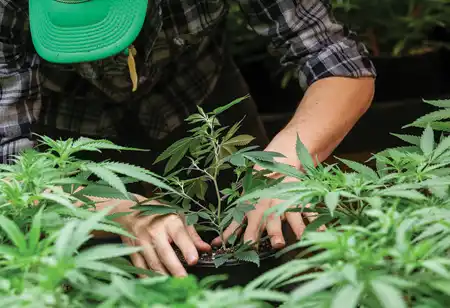Thank you for Subscribing to Agri Business Review Weekly Brief
Impact of Digitalization on Livestock Farming Practices
With the advancement of animal trackers, including those used on cows, farmers may now obtain comprehensive data from their mobile devices to monitor animals, detect illnesses, and enhance export welfare. Originally, trackers were used to assist farmers in managing cattle movements.

By
Agri Business Review | Friday, March 21, 2025
Stay ahead of the industry with exclusive feature stories on the top companies, expert insights and the latest news delivered straight to your inbox. Subscribe today.
Fremont, CA: While genuine farms have employed precision farming methods for many years, the term has recently become more prominent in livestock farming, thanks to technological advancements. Traditional farming methods, like visual inspections, are now being enhanced digitally to boost health and welfare. Farmers can achieve the same goals effectively through innovative solutions by utilizing technology.
Some methods the agricultural sector employs technology to enhance farming methods in an expanding global community.
More transparency in nutrition
Proper nutrition is crucial for livestock productivity. Farmers frequently incur the most significant expenses, so they must work hard to get a return on their nutrition investment. However, feed raw material quality variations can only be noticed once they negatively impact an animal's performance or cause health problems.
Body composition score digitization
Farmers utilize the body composition score, or BCS, a visual assessment tool to ascertain a sow's reproductive stage and gauge her overall health. To bring it into the digital age, researchers have created a mobile phone solution that makes data collection more objective, consistent, and able to be done over an extended period of time rather than just as a one-time measurement. Standard measures can be easily digitally entered, added to farm management software, and communicated with the veterinarian to improve animal care.
Addressing Respiratory Problems on Swine Farms
Pigs raised on swine farms are susceptible to respiratory problems, which farmers used to monitor by keeping an ear out for a coughing fit. However, farms are noisy environments with constantly moving machinery and animals, making identifying strange coughs in the din challenging.
When sound monitoring is complex, researchers examine how sound diagnostic equipment might serve as the farmers' eyes and ears. These devices use acoustic sensors to monitor anomalies, such as coughing pigs. They also take measurements of temperature and humidity in the barn, which are connected to respiratory health and digitally communicated to the farmer.
Remote Monitoring Of the Health of Herds
With the advancement of animal trackers, including those used on cows, farmers may now obtain comprehensive data from their mobile devices to monitor animals, detect illnesses, and enhance export welfare.Originally, trackers were used to assist farmers in managing cattle movements. Today, with the use of RFID tags, today's "connected cows" can track their whereabouts and identify each animal to a farmer. This improves herd efficiency when grazing over long distances.





